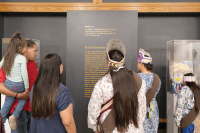It’s bird-tember!
 Those quiet mornings are starting to set in. Yesterday, the only morning chorister in full song, in my yard was a Carolina wren. My summer-hooded warbler could be heard occasionally, but it was like he was humming to himself. Immature towhees were shouting out “drink!” from the tangles and there was an assortment of humming bird squeaks and chickadee and titmouse grousing but the rousing morning chorus that has been with us since early May is gone.
Those quiet mornings are starting to set in. Yesterday, the only morning chorister in full song, in my yard was a Carolina wren. My summer-hooded warbler could be heard occasionally, but it was like he was humming to himself. Immature towhees were shouting out “drink!” from the tangles and there was an assortment of humming bird squeaks and chickadee and titmouse grousing but the rousing morning chorus that has been with us since early May is gone.
Neotropical migrants are packing their bags and heading south. The sad thing is, once they’re gone, it’ll be next April before we wake up to their beautiful music once again. The not so sad thing: they will be coming through, virtually by the millions, for the next couple of months.
Fall migration can be even more intense than spring migration. Migrants often appear in mixed flocks, foraging through the trees and understory. Trying to keep up with them and pick out individual species can get hectic. The challenge is intensified by the fact that many migrants will be in fall plumage, which can be totally different from their summer finery. LBJs (Little Brown Jobs) are common in the fall and don’t expect to ID every flutterer. But the rush of having seven or eight different species of migrants in the same tree at the same time will more than make up for the ones that get away.
Fall migrants might show up anywhere at almost anytime for the next couple of months. I had one small group come through my yard last week that included chestnut-sided warbler, hooded warbler, northern parula, Tennessee warbler, black-and-white warbler, blue-headed vireo and eastern wood pewee. There are, however, some tried and true spots across the region for bumping into fall migrants.
Caesar’s Head State Park on U.S. 276 in South Carolina (just below the North Carolina border) is probably the premiere hawk-watching site in the area. Volunteer counters (the Wing Nuts) at Caesar’s Head generally record between 12,000 and 15,000 broad-winged hawks, plus an assortment of other raptors each fall. The Mt. Pisgah hawk-watch, actually located at the Mills River Valley Overlook at milepost 404 on the Blue Ridge Parkway, can also be very productive.
If it’s shorebirds you’re hoping for there are a couple of spots to consider. Super Sod, sod farm on Hooper Lane in Henderson County is a great place to check for migrating shorebirds, especially after rains. To get to Hooper Lane, take the Asheville Airport exit (exit 40) off of I-26. Go west on N.C. 280 approximately 4 miles to a traffic light at the intersection of N.C. 191. Turn left, travel approximately 1/2 mile, turn left onto Jefferies Road. Continue about 2 miles and Hooper Lane is on the right.
Related Items
Another great place for shorebirds and passerines is Rankin Bottoms Wildlife Management Area. Rankin Bottoms is in Cocke County, Tenn., and can be accessed from U.S. 25, just north of Newport. This area has become a notable stop over for fall shorebirds including many species of sandpipers as well as greater and lesser yellowlegs, dowitchers, ruddy turnstones and others.
Some other great spots for warblers and other songbirds include:
n Tessentee Bottomland Preserve — off U.S. 23/441, 5.2 miles south of Franklin. Follow Riverside for 0.5 miles to its end. Turn right on Hickory Knoll Road and follow it for 1.8 miles. Turn right at 2249 Hickory Knoll Road. There is a sign on Hickory Knoll Road indicating Tessentee Bottomland Preserve on your right; the red farm gate to the left, as you enter, is the entrance to the property.
n Kituwah — about 300 acres belonging to the Eastern Band of Cherokee Indians, including the Kituwah Mound, is located on U.S. 19 between Cherokee and Bryson City.
n Jackson Park in Hendersonville — located on E. 4th Avenue is truly a migrant trap.
n And — where I’m headed this morning — Ridge Junction Overlook at milepost 385, next to the entrance for Mt. Mitchell State Park. Ridge Junction is unique because, much like a hawk watch, you can bring a chair and get comfy at the overlook and wait for migrants to come through the pass up and over the parkway.
I’ll let you know next week if anything was flying.
(Don Hendershot is a writer and naturalist. He can be reached a This email address is being protected from spambots. You need JavaScript enabled to view it..)









